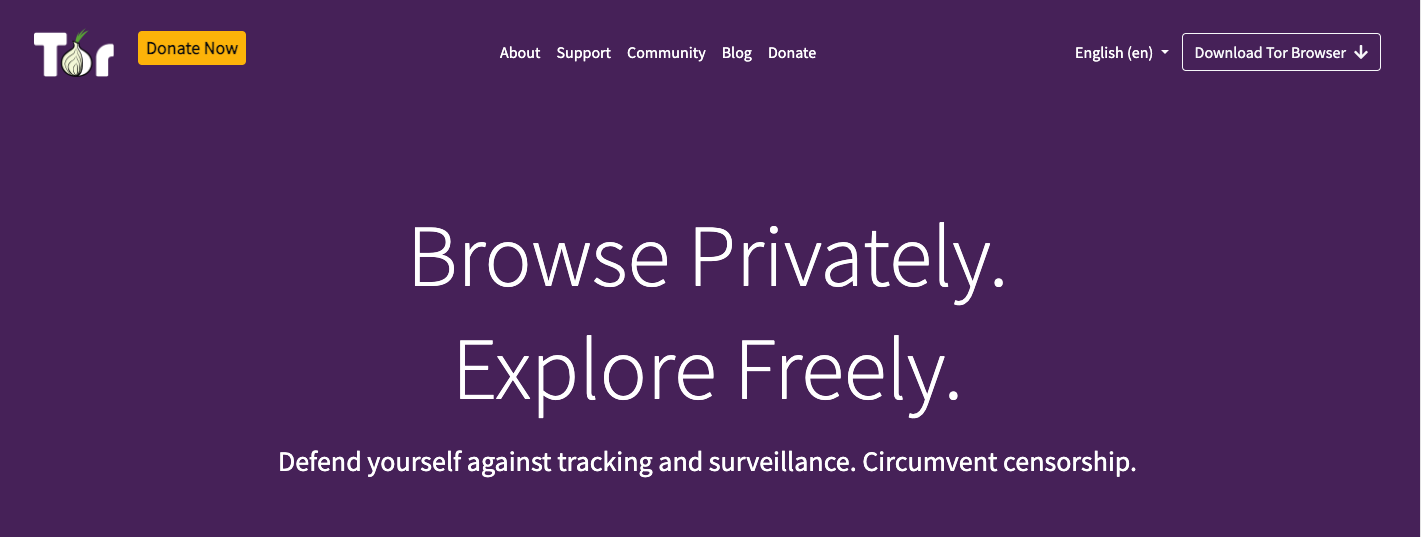The internet has transformed the way we communicate, access information, and conduct our daily lives. While the internet offers unparalleled convenience and connectivity, concerns about privacy, surveillance, and censorship have also emerged. In response to these concerns, a remarkable tool was developed to provide users with online anonymity and secure communication. Known as Tor (The Onion Router), this innovative software has become synonymous with the Dark Web and anonymous browsing. In this article, we will explore the origins of Tor and the individuals behind its invention.

- The Genesis of Tor
The origins of Tor can be traced back to the United States Naval Research Laboratory (NRL) in the mid-1990s. The idea of anonymous communication and secure internet browsing was conceived as a research project aimed at protecting classified government information. NRL researchers Paul Syverson, Michael Reed, and David Goldschlag were the pioneers behind the concept of onion routing, which forms the foundation of the Tor network.
Onion routing involves passing data packets through multiple volunteer-operated servers, each layer adding an additional layer of encryption. This multi-layered encryption is akin to the layers of an onion, hence the name “onion routing.” The purpose was to create a network where messages could be transmitted through various nodes, making it challenging for adversaries to trace the origin and destination of data.
- Early Development: From Onion Routing to Tor
The research project on onion routing continued to evolve over the years. In 1997, the concept caught the attention of two additional researchers, Roger Dingledine and Nick Mathewson, who later became pivotal figures in the development of Tor. Together with Paul Syverson, they founded The Free Haven Project, a nonprofit organization dedicated to privacy, anonymity, and censorship resistance.
In 2002, The Free Haven Project, along with the U.S. Naval Research Laboratory, released the Tor project to the public. Tor, an acronym for The Onion Router, was an advancement of the onion routing concept. The goal was to provide internet users with a means to browse the internet anonymously and access hidden services securely.
- The Tor Project and the Team Behind It
The release of Tor to the public marked the beginning of the Tor Project as an open-source initiative. The project attracted a growing team of developers, maintainers, and volunteers from around the world, all committed to enhancing online privacy and security. Roger Dingledine and Nick Mathewson emerged as key figures within the Tor Project, guiding its development and advocating for digital civil liberties.
The Tor Project operates as a nonprofit organization, supported by donations and grants from individuals, organizations, and institutions that share a commitment to internet freedom and user privacy. The team continuously works to improve the Tor network and the Tor browser to ensure a secure and reliable user experience.
- The Expanding Reach of Tor
Since its public release, Tor has grown in popularity and gained widespread recognition as a valuable tool for internet users seeking online anonymity. The Tor browser, the primary gateway to the Tor network, is available for various operating systems, including Windows, macOS, Linux, and mobile platforms.
Tor’s appeal extends beyond privacy-conscious individuals; it is also used by journalists, activists, whistleblowers, and individuals living under repressive regimes seeking to communicate and access information safely. By routing internet traffic through a network of volunteer-operated relays, Tor allows users to maintain their anonymity and avoid surveillance or censorship.
- Ethical Dilemmas and Dark Web Association
While Tor was developed with the noble goal of providing privacy and security to internet users, its association with the Dark Web has led to ethical dilemmas and public misconceptions. The Dark Web, operating as a hidden segment of the internet, uses the Tor network to facilitate anonymous communication and transactions, leading to concerns about its use in illegal activities and cybercrime.
It is essential to understand that Tor itself is a neutral tool, and its ethical implications depend on how it is used. While some individuals use Tor for legitimate purposes, such as protecting their privacy and free speech, others exploit its anonymity for nefarious activities.
Conclusion
The invention of Tor marked a significant milestone in the quest for online privacy and anonymity. Developed by researchers at the United States Naval Research Laboratory, Tor was born out of a desire to protect classified government information. Over time, it evolved into an open-source project known as the Tor Project, led by dedicated developers and volunteers worldwide.
Tor’s contribution to internet freedom and privacy cannot be overstated, providing users with a means to browse the internet anonymously and access information securely. As the internet continues to evolve, the role of Tor in protecting user privacy remains crucial, while the ethical dilemmas surrounding its association with the Dark Web continue to provoke debates.
The future of Tor lies in the hands of its global community of users, developers, and advocates, all united in the pursuit of maintaining a private and secure digital environment. By empowering individuals to take control of their online identities, Tor has made a lasting impact on the way we navigate the internet and interact in the digital realm.